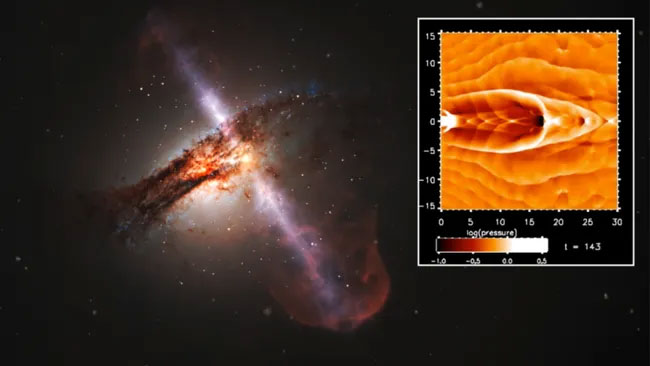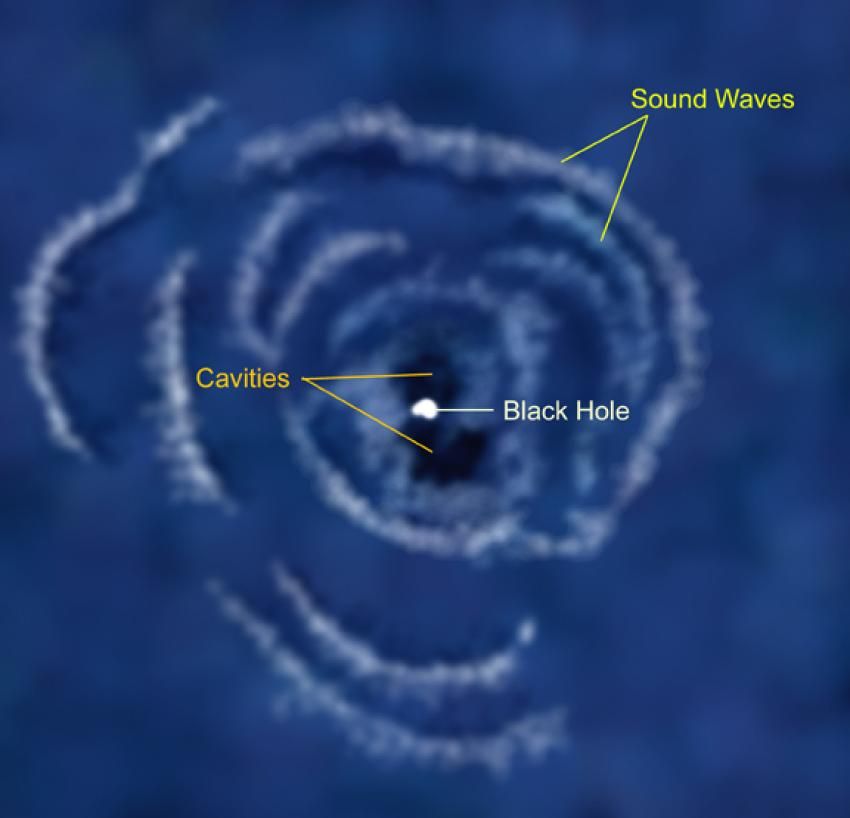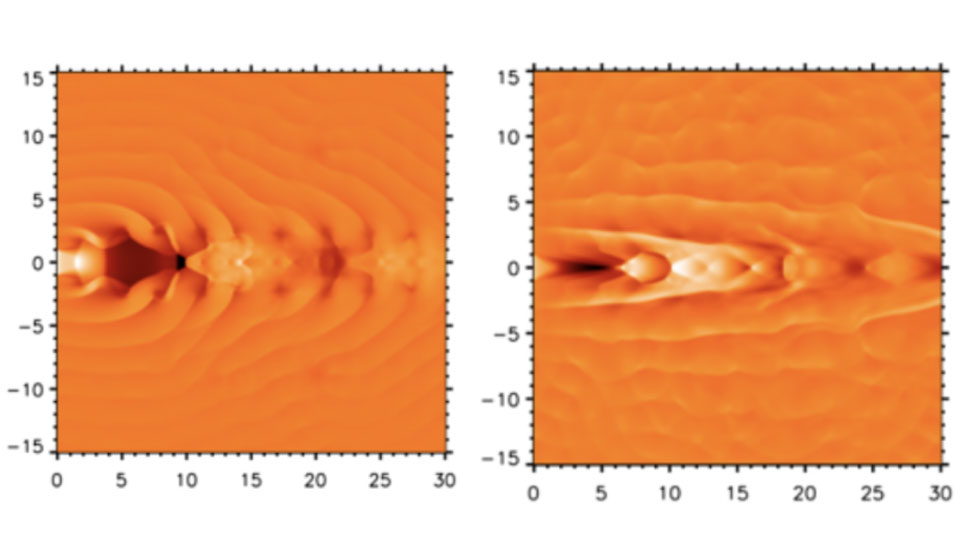Galaxies could live longer if supermassive black holes act as their “hearts and lungs,” keeping them breathing and preventing them from growing too big. That’s the suggestion of a new study, which suggests that the universe would have aged much faster and today be filled with “zombie” galaxies containing dead or dying stars if it weren’t for the supermassive black holes that are thought to reside at the heart of all large galaxies. The astrophysicists behind the discoveries compare the jets of gas and radiation that supermassive black holes blow from their poles into their airways to breathing and lungs.
The University of Kent team believes that pulses from each black hole’s “heart” cause shock fronts that oscillate back and forth across both jets. This is similar to how a part of our bodies called the thoracic diaphragm moves up and down inside the chest cavity to inflate and deflate our lungs, the journal Monthly Notices of the Royal Astronomical Society reports.

A white disc with dark bands running through it and long purple lines radiating from its poles. ESA/Hubble, L. Calçada (ESO)/C Richards/MD Smith/University of Kent
In galaxies, this breathing-like action transfers energy from the supermassive jets ejected by the black hole into the surrounding environment, much like you might exhale warm air into colder air on a cold winter morning. Stars form when interstellar gas clouds cool and condense. This means that this “exhalation” can slow star formation, curtailing the growth of galaxies.
The team came to this conclusion after analyzing simulations designed to reproduce the effect of supersonic supermassive jets ejected by a black hole on slowing the growth of galaxies. The simulations showed that the heart of a supermassive black hole can pulsate, creating high pressure in the jets — much like a person suffering from high blood pressure, or “hypertension.”
When this happened, the team saw that the jets began to act like bellows, causing sound waves that propagated through the surrounding galactic gas and dust material.
“We realized that there must be some means for the jets to support the gas surrounding the galaxy, and that’s what we found in our computer simulations,” team member Karl Richards, a PhD student at the University of Kent, said in a statement. “The unexpected behavior was discovered when we analyzed the high-pressure computer simulations and allowed the heart to pulsate.”
This sent a stream of pulses into the high-pressure jets, causing them to change shape through the action of bellows-like oscillating shock fronts in the jets. The researcher added that the jets expanded “like lungs filled with air.” In doing so, they sent pressure ripples into the galactic material around them, thereby stopping the growth of galaxies in the simulations.

An illustration showing sound waves (ripples) in the hot gas filling the Perseus cluster. They are thought to be created by cavities blown by jets from the supermassive black hole, the bright white spot at the center of the galaxy. NASA/NASA/CXC/M.Weiss
Beyond the team’s modeling, there is other evidence of this phenomenon in real galaxies. For example, about 240 million light-years from Earth in the Perseus galaxy cluster, astronomers have seen evidence of large gas bubbles in this collection of thousands of galaxies, embedded in a huge cloud of gas with temperatures of several million degrees. They are thought to be the result of sound waves rushing through the galactic medium in this cluster.
However, achieving a balance between black hole activity and the flow of gas into galaxies is extremely difficult, since supermassive black holes require a constant supply of gas and dust to create jets.
“Breathing too fast or too slow will not provide the life-giving kicks needed to maintain the galactic environment while also fueling the heart,” team member and University of Kent researcher Michael Smith said in a statement. “However, doing this is not easy, and we are limited by the type of pulsation, the size of the black hole, and the quality of the lungs.”

Sound waves
A team of scientists has concluded that the lifespan of a galaxy can be extended by its supermassive black hole “heart” and its jet “lungs” ejected from its core, as they curb growth by limiting the amount of gas collapsing into stars early on.
Without this mechanism, many galaxies would by now have exhausted the fuel they need to form stars in our 13.8-billion-year-old universe. As a result, they would run out of steam, and most galaxies would now resemble so-called “red and dead” zombie galaxies, filled with ancient, burned-out stars.




